► Mindfulness in Time Management
►Applications for time management
Time management is an ever-evolving skill, and staying ahead of the curve can significantly boost your productivity and life satisfaction. Let's explore some cutting-edge strategies and lesser-known techniques that can take your time management skills to the next level.
Time management is the process of controlling, planning, and using time to perform daily activities. Time management creates happiness in life and increases emotional well-being. In the topic of work scheduling, we should pay attention to the limited time and not let time get out of our hands.
It has happened to many of us that we have a lot of things in mind for a day and we have to do them, we even plan for them, but in the end, the result is not very pleasant. In this case, our thoughts and feelings get confused and we face challenges in our professional and personal life. What should we do now so that we don't get into trouble for doing our work?
Time is one of the most precious and valuable resources that every person has in his life, and time management has become one of the concerns of modern humanity because people are busy. Lack of sleep, increased stress, poor quality sleep, etc. are some of the problems of lack of time management.
By getting and controlling time, we can reach higher job positions or do things that we never had time to do.
In this article, we intend to teach you the skills of time management to achieve career, academic, and social success with the right use of time, and skills such as basic planning, prioritization of tasks, and the use of productivity applications. Use it to improve your lifestyle.

What is time management?
Time management is the process of controlling, planning, and maximizing the use of time to perform daily activities. The most important feature of scheduling is that a person can do the maximum amount of work in the least amount of time. Time management creates balance in life and increases feelings of happiness. In the topic of task scheduling, we must pay attention to the limited time and not let time slip out of our hands.
Why are time management skills important?
Do you always feel that you are busy?
Can't finish your work on time?
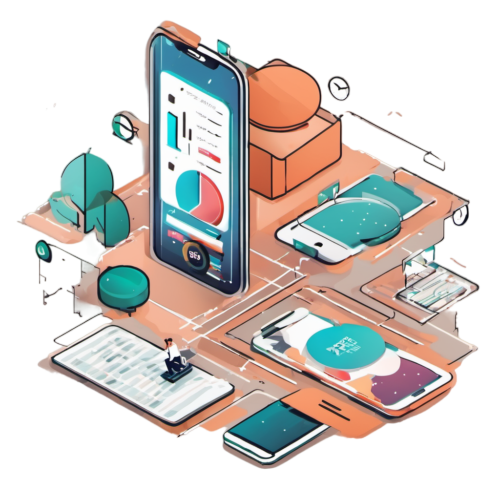
If your answer to these questions is positive, you are not familiar with the issue of scheduling tasks, and this has caused your time to go out of control and caused you to feel anxious in life. Stress and anxiety are the cause of all diseases and can cause health problems for you.
The most important scheduling is understanding the value of time and using it. If we understand this concept, in addition to taking full advantage of time, we will not regret doing things in the future.
Benefits of time management
By scheduling tasks, we can achieve more results in less time, and on the other hand, we have more free time than we have to deal with our tasks.
If you are waiting for the golden time to achieve your dreams, we must say that you have lost the game of life. But with time management, you can create time to achieve your dreams instead of waiting for them to arrive.
In this part of the article, we mention some of the benefits of time management:
- Managing stress and increasing happiness: All people have experienced the feeling that when they carry out their work according to plan and with high quality and speed, they unconsciously feel the feeling of happiness in themselves. The feeling of happiness is caused by the release of the hormone dopamine, which is also called the feel-good hormone; The release of this hormone in the body increases energy and reduces stress.
- Increasing self-discipline: People who can manage time start their day with planning. By planning, tasks are prioritized according to their importance, and a specific time is allocated to each task, and people know at what time what should be done; This makes people's activities and productivity more orderly.
- Saving time: Scheduling tasks allows us to have more time to do daily activities. With this work, a specific period is allocated to a task and all tasks are completed while saving time.
- Reduce confusion and regret: When you use a daily schedule to do your work, you know what time you should allocate for what. With comprehensive planning, we prevent wasting time and money and prevent things from being rushed, this will reduce confusion in life, and there will be no room for regrets.
Time management techniques
When you are on this page and you are reading this article, it means that you feel the need to make the most of the time you have to achieve and do all the important things.
There are techniques for time management and by learning these methods, you can improve your time management skills and make the best use of time. By learning time management techniques, you can focus on important things and do more. Increase your data and productivity.
There are many time management techniques, and in this article, we will mention the most useful and important of these techniques. You can also use them to determine which technique is more useful for you. With this, you will no longer be caught in the trap of trying all the time management techniques in the world.
Time management technique: GTD
Gtd is one of the most famous time management methods in the world. This technique was introduced by David Allen in his bestselling book, Getting Things Done: The Art of Stress-Free Productivity. The principles of this method are that information should not be kept in the mind, because the mind is the place of generating ideas, not keeping them. When we store ideas and other information in our minds, in addition to its limited storage capacity, we may lose information.
In the gtd method, a person must first remove the tasks from his mind and record them. By doing this, the mind is freed from remembering what to do and can focus on the recorded tasks.
Today, many applications have been developed based on this method, which can be useful in the management field. Some popular apps include Redaapp, Todoist, anydo, and TickTick.
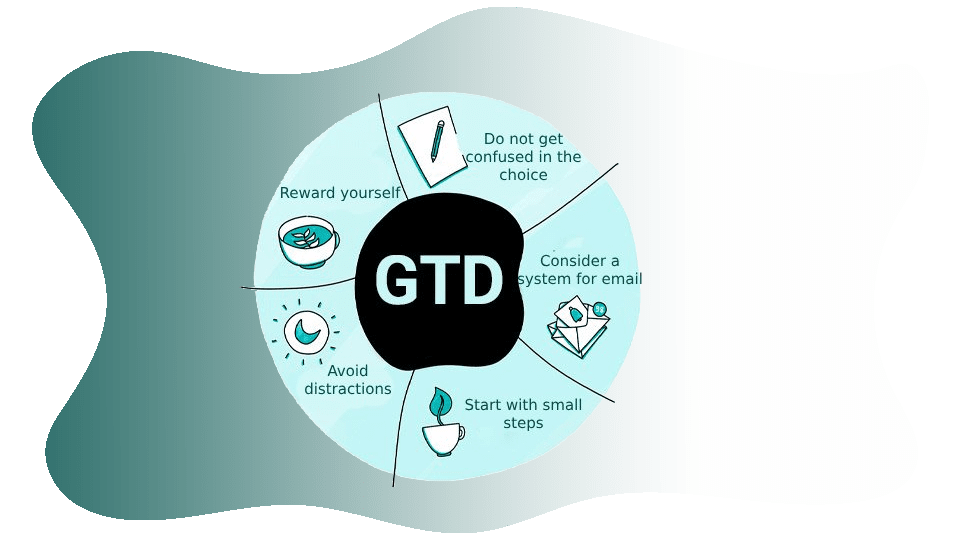
Time management technique: Pomodoro
The Pomodoro technique was first proposed by Francesco Cirillo in the late eighties and is still widely used today. This technique is one of the simplest time management methods and helps people to improve their energy for work by dividing work into more manageable parts. The Pomodoro technique is that after every 5 minutes of work, you rest for 5 minutes and do it once every hundred minutes for a longer period.
One of the main benefits of using the Pomodoro technique is increasing motivation to do tasks and tasks. This technique will help you to dedicate the most possible time to the work while taking enough rest, with high accuracy and concentration. Meanwhile, you can improve this process by defining personal challenges for yourself.
The advantages of the Pomodoro technique are that the working time is constant and more focused, the presence of regular breaks will eliminate burnout and improve performance, and it is also an easy way to track productivity.

Time management technique: Timeboxing
Time Boxing is a time management technique that limits work that may take minutes, hours, days, or even weeks to a fixed time frame. Time Boxing is where you work on an activity for a fixed period and stop working on it when the time is up. Then you evaluate whether you have achieved your planned goals or not.
The Time Boxing technique of time management helps people to take control of their schedule. Unlike many productivity practices where a person takes on a task and works on it until it is completed, timeboxing is a time management technique that limits work to a fixed (but realistic) schedule. This schedule may take minutes, hours, days, or even weeks depending on the complexity of the task.
There is no specific rule for the duration of one (Time Boxing). But for effective time boxing, consider a time when you can dive deep into the work. That doesn't mean you can't use Time Boxing for larger tasks. But if you want to use timeboxing for a task that takes more than two or three hours, start by breaking it into smaller chunks.

Time management technique: eat the frog
This time management technique was invented by Brian Tracy, an entrepreneur from Canada. Brian Tracy has spent thirty years writing this book and studying time management, planning, and activities of people like Alex McKenzie, Stephen Covey, and many other famous and successful people. eat the frog technique is an excellent technique for dealing with procrastination and laziness.
The main concept of the eat the frog technique is that you should do the hardest thing first. This method is that when you wake up in the morning, based on the difficulty of the task, you should do the most difficult task first.
If you can swallow a live frog every morning, you'll be relieved the rest of the day that you've accomplished the hardest task of the entire day. Thus, the most important decision you have to make every day is what is the first thing you should do to make yourself feel relaxed by the end of the day. By using this method, you can save your time and, as a result, have the best productivity of your time and, as a result, of life, and postpone procrastination.

Time management technique: Eisenhower matrix
The Eisenhower technique was first invented by Dwight D. Eisenhower, a five-star American general in World War II and the 34th president of this country. He considered the secret of his presidential success to be the use of this method. In one of his speeches, he said "I have two types of problems: urgent and important." Urgent things are not important, and important things are never urgent." This sentence became the basis of the Eisenhower principle, which can make time management accessible to everyone practically and simply.
In Eisenhower's time management technique, the most important point is setting priorities, the order of tasks, and the amount of time allocated to each activity. In this method, tasks are sorted from highest to lowest based on the two main factors of urgency and importance. Eisenhower's technique divides tasks into 4 categories based on importance and urgency, important and urgent tasks, important but not urgent tasks, unimportant but urgent tasks, and non-important and non-urgent tasks. To use this method, we need to recognize which group our jobs belong to and form the Eisenhower matrix for ourselves.
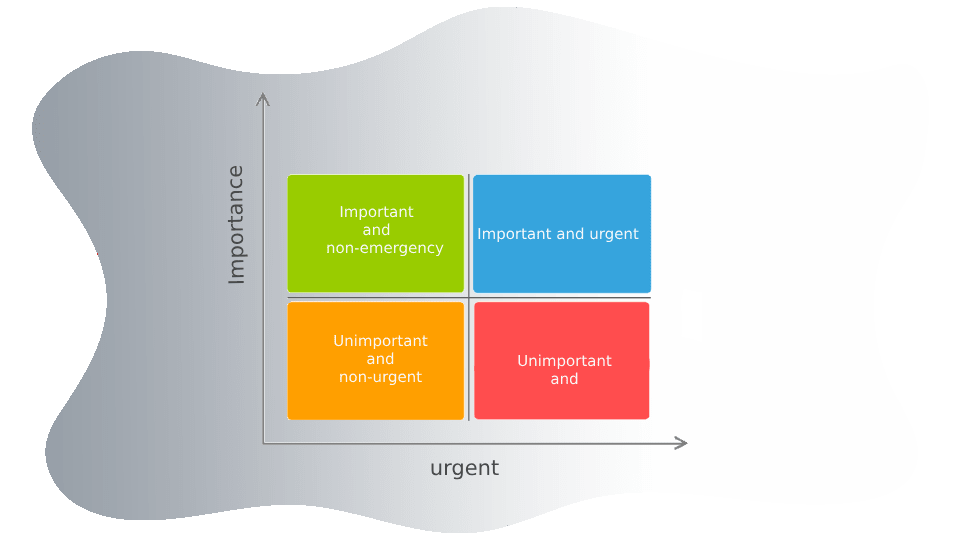
Time management technique: Kanban
This technique was used in the 1960s in Japan by Taiichi Ono for the Toyota Motor Company to help increase their productivity and effectiveness in production. At the beginning of the 21st century, people in the software industry realized that Kanban could make a big and positive change in the way products and services are provided. But what we know today as the "Kanban method" appeared at the beginning of 2007.
Kanban Time Management Technique An intuitive time management technique that helps you track the progress of your projects. You track the progress of tasks in columns with different labels. In Japanese Kanban means visual sign, The Kanban board is a tool for implementing Kanban methodology in projects and the progress of projects can be seen on the Kanban board.
To use the Kanban method, 6 main steps must be taken, which are:
1. Visualization of workflow
2. Limit work in progress
3. Flow management
4. Clarify process rules
5. Implementation of feedback cycles
6. Collaboration for improvement
The main advantage of using the Kanban method is that it helps clarify the problem a lot.
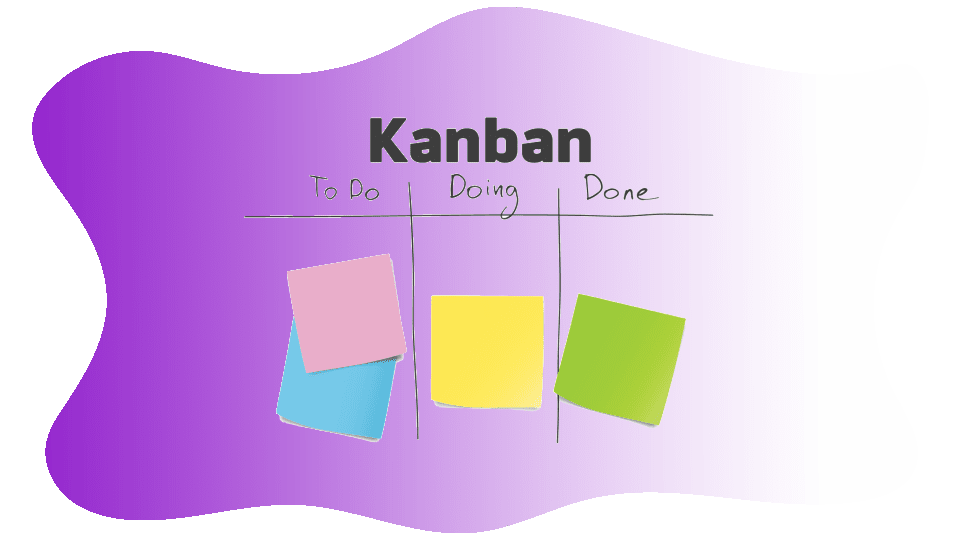
Time management technique: pickle jar
The pickle jar time management technique is an allegory for how to use the time we have. If we think of a pickle jar while planning our work, we can do our important and big things. Suppose you have a large, empty pickle jar, fill this jar with large golf balls until there is no more room for golf balls. It seems that the pickle jar is full, but your work is not finished yet. Now you can put some marbles in the jar. Now we add some sand to the empty spaces. It seems that the jar is full, but there is still room for a little water. has it!
The same example can be used for the topic of time management. We prioritize things and do them according to their importance. Using the pickle jar technique means that if you want to handle the important responsibilities that have been placed on your shoulders, you must finish all the important tasks that you enjoy doing, and then the small tasks that If you add them to your program, do not be a problem.

Time management technique: Time blocking
Time Blocking is a time efficiency technique that requires you to divide your day into small time sections or time blocks. Each block or section is assigned to a specific task. You can use the time-blocking technique for a day or a week.
By allocating time for each specific task or activity, you can have better control over your day. You can also list your tasks and estimate the amount of time needed to complete each task, then prioritize the most important and necessary tasks and ensure that you devote the attention and focus that is required for that particular task.
The time management technique of time blocking is an effective way to reduce procrastination. When you allocate time to do a specific task, you will be forced to complete that task within that time frame, and by eliminating procrastination, you can Do your work with more focus and accuracy and reduce procrastination to zero.
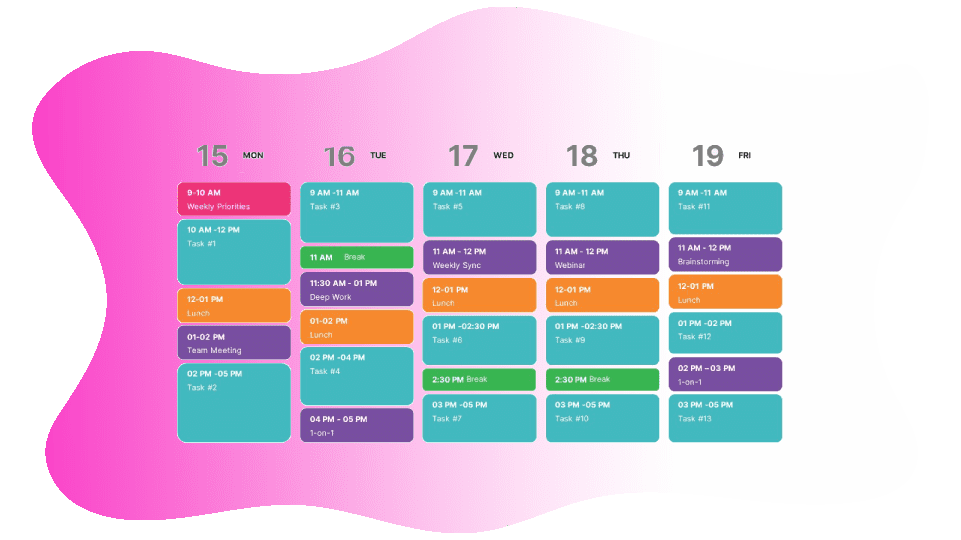
Time management technique: Pareto
Pareto's time management technique or 20 80 was first proposed by Wilfredo Federico Damaso Pareto. Hence it was named the Pareto principle. One day he realized that only 20% of the peas in his garden accounted for 80% of the crop results.
This example led Pareto to conclude that this law can be used in different aspects of life. Pareto principle shows us that 20% of our activities can lead to 80% of the results, and in this way, it has a significant impact on our time and energy management.
The 20-80 law, or Pareto's law, is one of the most useful concepts for life and time management. The principle concept of Pareto's law means that 80% of results come from only 20% of actions. The 80-20 rule says that 20% of your actions produce 80% of your results. 80% of results come from 20% of inputs. Using this law helps us to achieve better results and transform our lives by focusing on issues that have a higher priority. Using the Pareto principle allows you to achieve better results in various aspects of life and increase your productivity by reducing your effort and energy level.
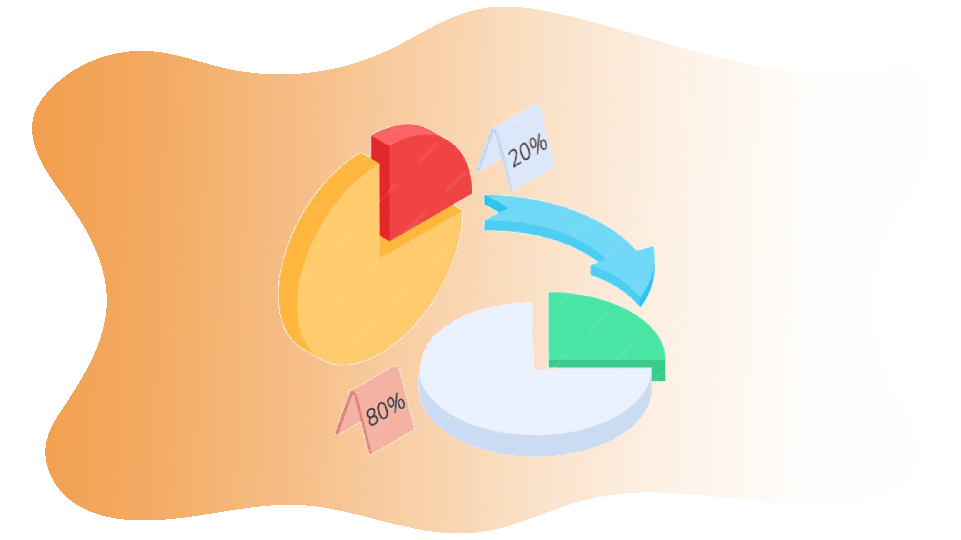
Time management technique: Rule 1-3-5
In the topic of time management by the 1-3-5 method, this rule is that you cannot do everything in a day, and a realistic vision is considered to achieve the goals. The time management technique of the rule 1-3-5 says that a person can do only 1 big task, 3 medium tasks, and 5 small tasks during the day, and at the end of the day, by ticking the todo list, a person will feel a sense of success and a feeling of happiness and satisfaction.
1-3-5 time management techniques can be more useful for students to do lesson planning so that they can achieve big and small tasks and activities during the day.
In this way, when you do your big task at the beginning, your motivation to do the next tasks will be doubled. Three principles must be paid attention to to use this law, otherwise your time management will fail. The first step is setting priorities. You have to prioritize 9 of your tasks based on difficulty. The second thing that is required to do this law is to avoid procrastination and stay away from distractions. To avoid procrastination, you can read the article on procrastination.
The third principle, which is the most important principle both in this technique and in all the techniques we explained, is planning. Planning is the most important and sensitive principle for time management. In the method of Law 1-3-5, planning is also of special importance, in the following, it will be explained about the specialized program.
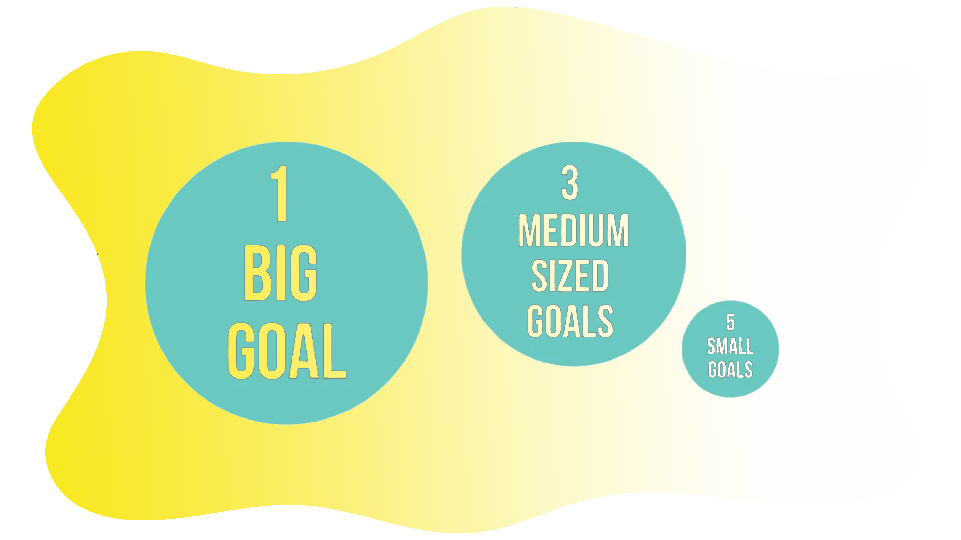
time management technique: Who’s Got The Monkey?
Suppose you are sitting at your desk as a manager and your employees come into your room. The reason for the visit is to express the problem that occurred in the process of doing the work. Managers who are interested in having many monkeys, the solution to the employee's problem can be taken from the decision, and in this way, the problem of the employee's shoulder is transferred to the manager. Now imagine how many times a day this happens to a manager! Undoubtedly, at the end of the day, the manager is left with a large backlog of tasks that employees have been asked to do!
He uses the metaphor of a monkey to explain the tasks that are exchanged between the manager and the employee. For example, when a manager assigns a job to his employee, he says that the monkey was the manager on them and the manager put it on them as the employee. This method is based on assigning tasks and is aimed mostly at project designers, but it should be noted that others can also use it. Monkeys are tasks and you have to learn with them.
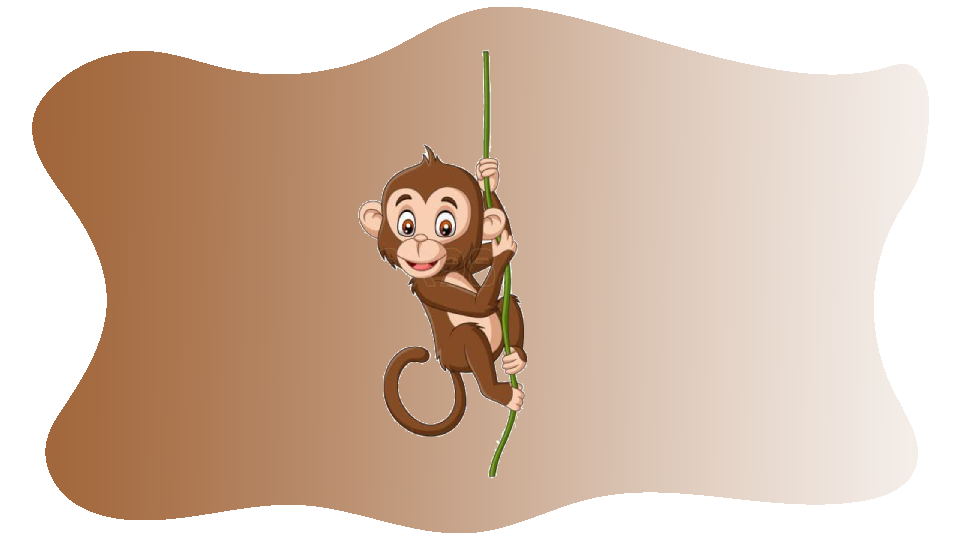
Time management: Biological Prime Time
Sam Carpenter first introduced this method in his book. Your best biological time is when you have the highest energy level, so your work is likely to be productive. Once you determine your best energy level, you can allocate your time and priorities to this time.
The advantages of using this method are that you can plan effectively, set priorities, and avoid distractions.
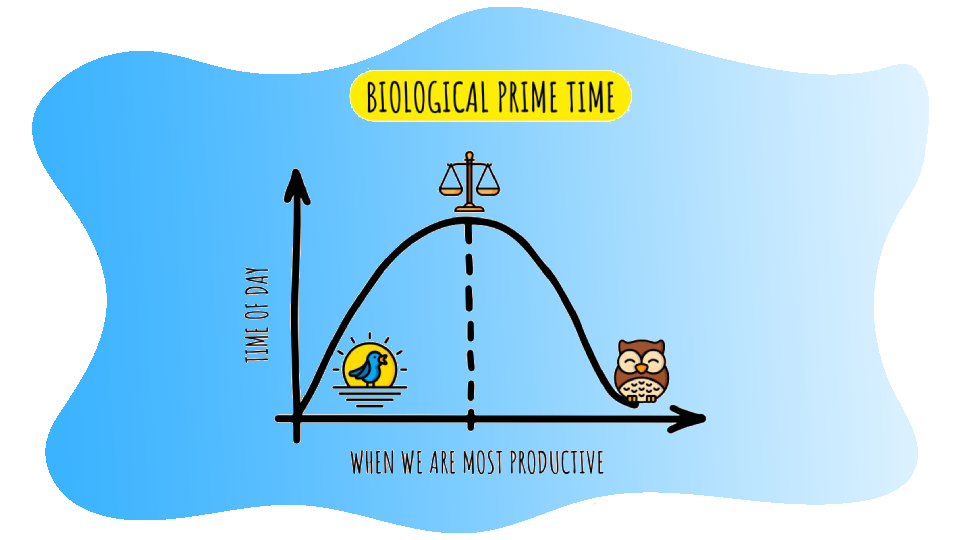
Time management: The Two-Minute Rule 2.0
David Allen's Two-Minute Rule states that if a task takes less than two minutes, do it immediately. Let's expand on this:
1. For digital tasks, use the "Five-Click Rule": If a task can be completed in five clicks or less, do it now.
2. Implement a "Delete, Delegate, or Do" system for incoming tasks.
3. Create a "Two-Minute Task Bank" for quick productivity boosts during unexpected free time.
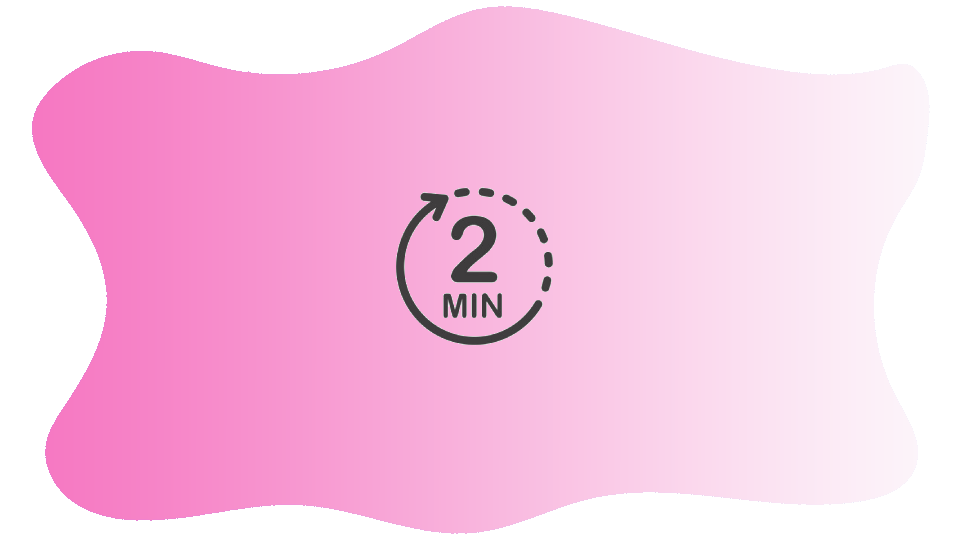
Time management: Digital Detox Scheduling
In our always-connected world, scheduling deliberate disconnection is crucial:
1. Plan weekly "Tech-Free Time Blocks" for deep work or personal activities.
2. Use apps like [AppName] to track and limit daily screen time.
3. Implement a "Notification-Free Morning" routine to start your day with focus.
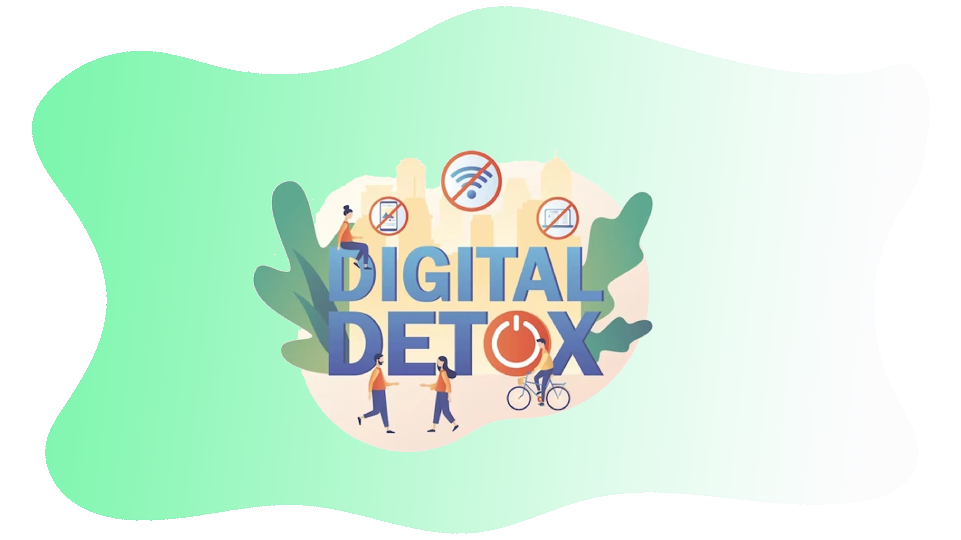
Time management: Mindfulness in Time Management
Incorporating mindfulness can enhance your time perception and management:
1. Practice "Time Estimation Meditation": Spend a few minutes daily guessing the passage of time without checking a clock.
2. Use "Mindful Transitions": Take a moment of conscious breathing between tasks.
3. Implement "Gratitude Timeouts": Brief pauses to appreciate completed tasks and progress made.

Planning in time management
Planning is a basic principle for time management, in fact, without planning, time management is meaningless. In all the techniques mentioned for time management, planning is necessary. If planning is not correct and principled, or if there is a mistake in the planner, it can lead people away from their goal instead of reaching it. Planning is done in different ways, some people classically plan for themselves with a notebook and a pen, but some others have made their work easier because they use the modern method and use Beria technology to plan for themselves. It is small.
Planning is done in different ways, some people plan for themselves classically with an office and pen, but others plan for themselves due to the use of modern methods and the use of technology. If you want to know more about planning, I suggest you read the article on planning to achieve goals.
If you have not planned your life until now or if you used the old way of planning, now is the time to make changes in your life. It is enough to use planning applications once to see the change in your life.
Reda application is one of those modern and advanced applications that can achieve your goals. If you don't believe it, try it. It is free for you for 7 days and you can use all the powerful features of the application for up to 7 days, and after that, you can renew. or use the same free features.
Applications for time management
The advancement of technology in all fields has made human life easier and more prosperous. In the field of time management, the advancement of technology has come to the aid of humans; There are lifestyle apps for phone time management that manage tasks and divide work in the best way according to the activities and tasks of users and guide people to achieve their goals.
You can get full productivity by installing these applications.
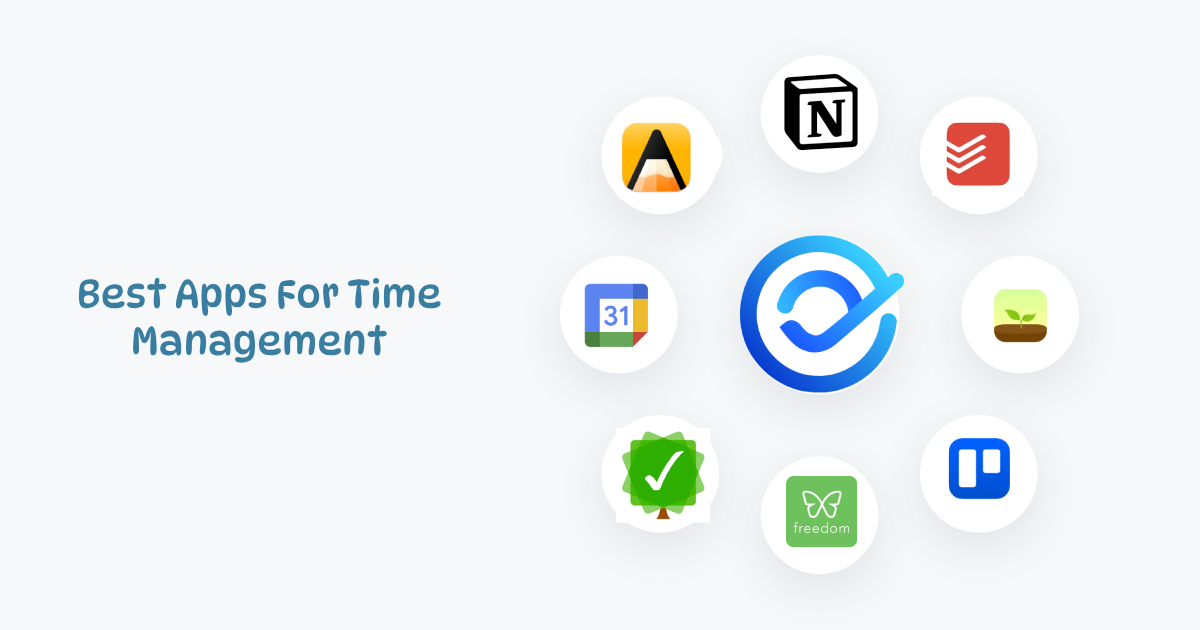
Some of the time management applications are:
1. read app
If you want to take control of your time and use all the features of planning and time management applications, we suggest you use the Reda application. The Reda application is programmed in real time 24 hours a day and makes plans based on people's living conditions.

2. Google Calendar
With the help of this application, you can define your daily plans, write notes on the same day, and set a certain time to display the notification. You can plan for next year now and be sure that Google will remind you at the appointed time.

3. Agenda
In the Egenda application, you can put your singles and projects in different categories and manage them with the help of the program's planning tools, create columns, and add personal or team projects. This application is suitable for students.

4. Notion
The notion is a single platform equipped with various productivity tools that help you keep your notes and manage and track your tasks in a single place.
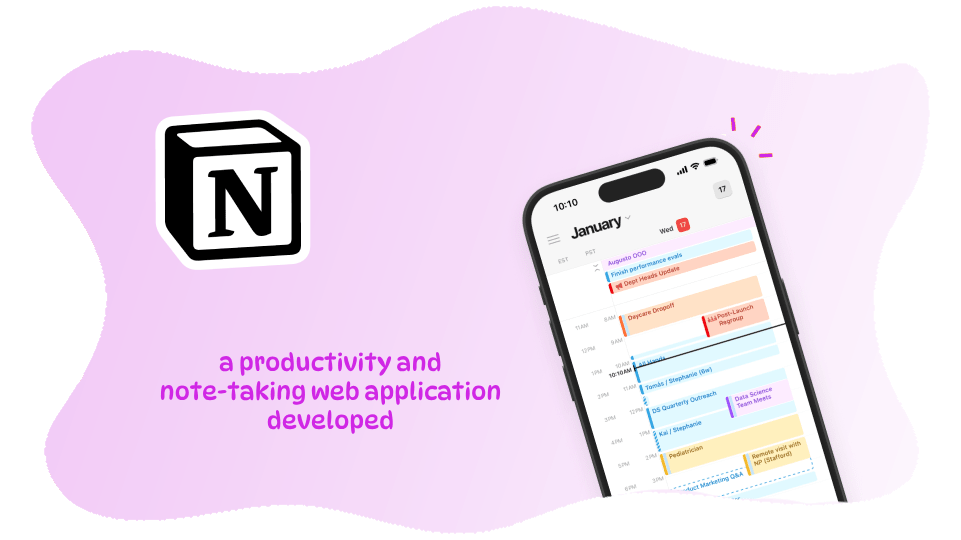
5. Todoist
Users can create different columns for projects in the Todovist application and control the status of each personal or group project according to these columns and their titles. In Todavist, you can specify the time of delivery and completion of any task or project and receive a notification before the time of implementation.

6. MyLifeOrganized
MyLifeOrganized helps manage tasks and achieve goals and increases focus on the most important tasks. Also, with this application, you can set a goal for yourself and manage your work and time.
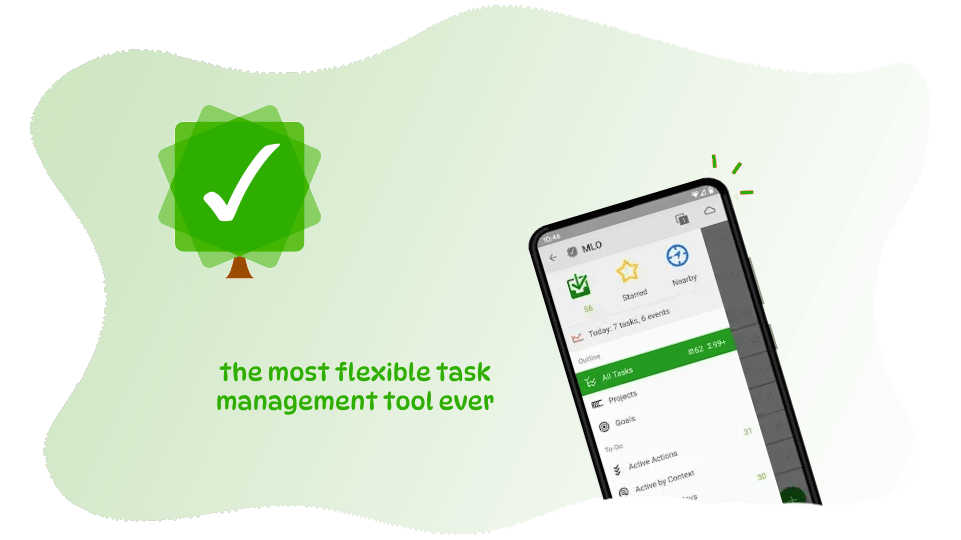
7. Forest
The time management tool of the Forest app is very interesting and fun, and it strengthens your focus while doing various tasks. As you go along, you'll create an amazing and colorful virtual forest that can be used as evidence of increased concentration.
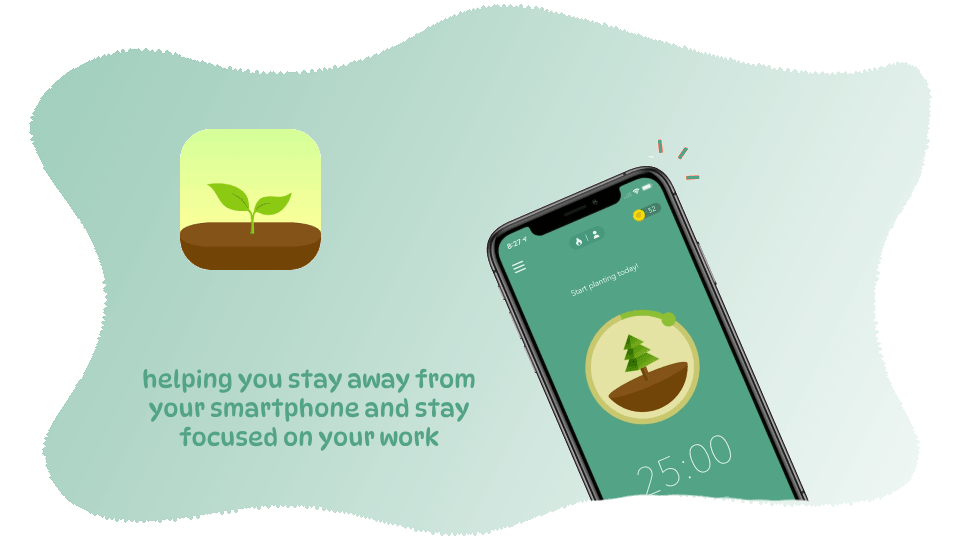
8. Freedom
The Freedom program brings you the freedom of action in better time management and prevents distractions; with the help of this application, you can use your time in the best possible way.

9. AnyDo
AnyDo application speeds up your work, and you can manage programs most easily. Not only do you have the ability to type tasks, but you can also add your to-do list by voice. The design of the app is very simple so you can easily work with it.

10. Quire
Quire is one of the best time management programs that helps increase the productivity of your team with creative solutions. The main strength of this tool is its easy collaboration and no need to share files.

Conclusion :
Getting to know time management techniques and applying them in life can play an important role in our success. With timing, people can act smarter and achieve their goals in less time.
If you know people who are not familiar with time management techniques and are confused about their personal lives, you can also send this article to them. to achieve peace in their lives by using the techniques of scheduling tasks.
What is time management?
Time management is the coordination of tasks and activities to maximize the effectiveness of one's efforts. Time management allows people to do more and better things in less time. You can schedule your time between your most critical tasks with the help of good time management.
Why is time management important? Or what are the benefits of time management?
The following are some of the special benefits of time management:
Better individual performance.
Delivery of work on time.
High-quality work.
Less procrastination.
Less stress and anxiety.
